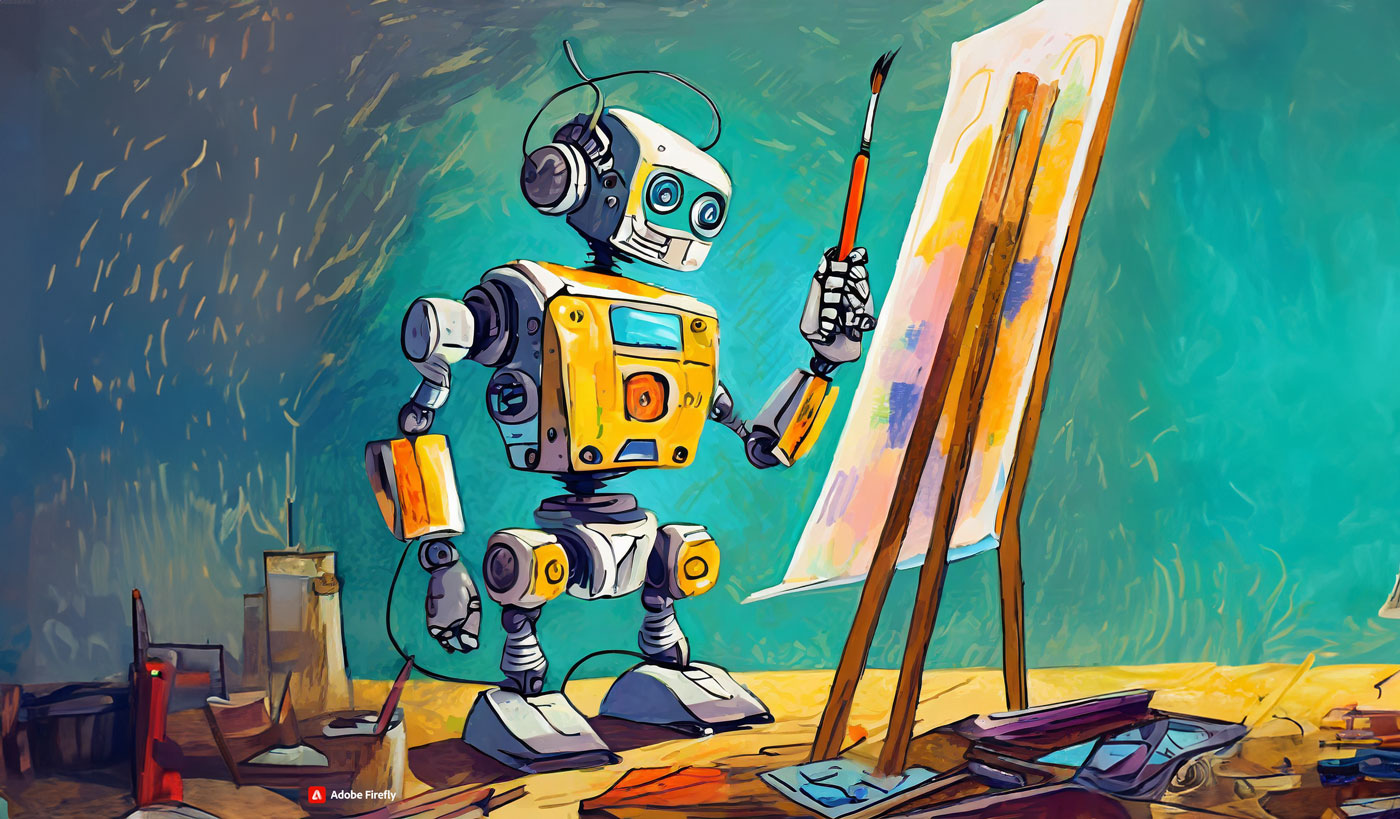
Credit: AI-Generated image created from Adobe’s Firefly, you can test out creating AI images with an account and utilizing their trial period.
Pixel Pioneers
Demystifying AI-Generated Media: A Guide to Licensing and Publishing
In the rapidly evolving landscape of artificial intelligence (AI), the creation of images and media has reached new heights. AI algorithms can now generate stunning visuals, artwork, and even entire scenes, raising important questions about marketing licensing. This blog post aims to demystify the intricacies of licensing and publishing AI-generated media, providing insights into the legal and ethical considerations.
AI-generated media is unique in that it lacks a human creator in the traditional sense. In many jurisdictions, copyright law typically grants authorship to human creators. As a result, determining ownership and rights for AI-generated content can be complex. It’s crucial to review the terms and conditions of the AI model or software used for content creation. Some platforms may retain rights to the generated content, while others may grant users more flexibility.
The legality of utilizing AI-generated media often hinges on whether the content originates from a closed-source model, think of iStockphoto or Shutterstock. In such models, the generative media is crafted with art owned or curated by the generator, compensating sources or artists for their contributions to the model. In my opinion, the safest approach appears to be sourcing generative AI media from established industry leaders such as Adobe’s Firefly, Shutterstock AI Generator, and iStockphoto AI Generator. These platforms provide clear delineation and ownership of the source imagery, establishing the legal parameters for their generated media.
In the majority of scenarios involving AI-generated media, it’s important to refrain from incorporating reference images that may lead to trademark or copyright infringement. Much like the restrictions observed in marketing photography, the use of images featuring trademarked landmarks (such as Chicago’s bean), licensed characters (e.g., Disney/Nickelodeon), logos, sports teams, and similar elements may be restricted due to limited usage rights or copyright considerations.
Take note that you are employing a live market-ready iteration of the generative AI media source. Avoid utilizing images generated from a ‘beta-version’ of a stock providers generative AI model, as it may lack proper reference photo licensing and quality control measures.
Make sure to thoroughly review the circulation and ownership guidelines of each source. Additionally, exercise heightened awareness of the source’s rules regarding attribution. In its current phase, maintaining clarity and transparency regarding the use of AI is crucial to safeguarding your corporate image and personal protection. Ensure that you are well-informed or take the lead in establishing your company’s standards for AI usage and how you present yourself to your audience when utilizing these products.
As AI-generated media continues to reshape the creative landscape, it’s crucial for creators, businesses, and users to navigate the legal and ethical aspects of licensing and publishing. Staying informed about ownership, licensing agreements, and ethical considerations ensures responsible and compliant use of AI-generated content. With proper awareness and adherence to legal frameworks, the world can embrace the limitless possibilities offered by AI without compromising on integrity and accountability.




